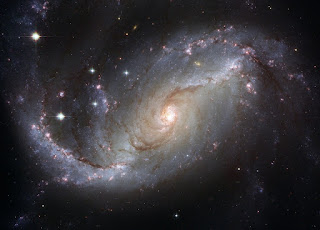Recent changes and what we know about the edge of our solar system
Just in time for Halloween, astronomers have discovered a spooky and strange phenomenon happening at the edge of the solar system: the heliopause, which marks the transition between the solar system's heliosphere and interstellar medium, appears to be rippling and producing unexpectedly oblique angles.
The idea that the heliopause is dynamic is not new; over the past ten years, scientists have come to this conclusion. Data from the only two spacecraft to have left the heliosphere so far, Voyager 1 and Voyager 2, as well as NASA's Interstellar Boundary Explorer (IBEX) satellite, which studies the emissions of energetic neutral atoms (ENAs) produced when solar winds and the interstellar medium interact, were used to make this discovery.
 |
| galaxy |
"The only direct, on-site measurement of where these borders are can be found comes from the Voyager spacecraft. but only at one specific point in time and space "Princeton University space physicist Eric Zirnstein sent Vice an email (opens in new tab). IBEX completes that data.
The information has been utilised by researchers to build models that forecast changes in the heliopause. In a nutshell, solar winds and the interstellar medium interact to form a border that is constantly shifting.
But recent research on heliopause has brought up data that contradicts previous results. For several months in 2014, IBEX took second place.
Additionally, when scientists examined data from the Voyager 1 and Voyager 2 voyages, they found that the heliopause changed dramatically over a very short period of time. This helps explain why there was such a large gap between her two probe entrances to interstellar space, which occurred in 2012 and 2018, respectively. But this type of movement through the heliopause also collides with the model.
In a paper published Oct. 10 in the journal Nature Astronomy (opens in new tab), the researchers called these discrepancies "intriguing and potentially controversial." They plan to continue studying the heliopause in hopes of gleaning more insights from NASA's Interstellar Mapping and Acceleration Probe. This is a new and improved satellite that can detect ENA and is scheduled to launch in 2025, Zirnstein told his Vice.
Until then, we can only ponder this eerie phenomenon happening in the haunting depths of the solar system.
